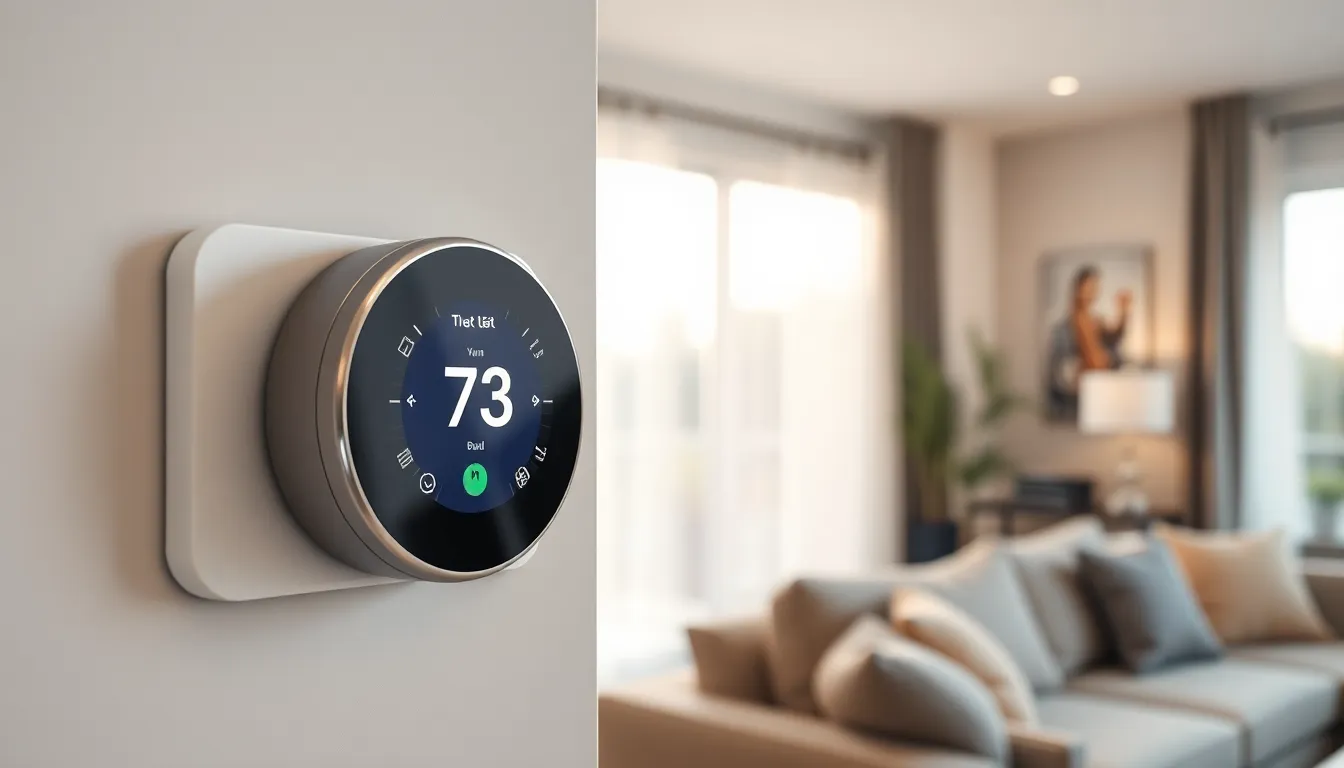Imagine a world where your toaster knows exactly when you want your bread perfectly golden. Welcome to the age of IoT deployments, where everyday objects are smarter than your average bear. As the Internet of Things continues to weave its magic, businesses and homes alike are transforming into interconnected ecosystems that promise greater efficiency and convenience.
Table of Contents
ToggleOverview of IoT Deployments
IoT deployments encompass various applications across industries, transforming how businesses operate and how consumers interact with their environments. Smart home devices lead in this expansive field, enabling users to manage lighting, temperature, and security from mobile devices.
Manufacturing leverages IoT through connected machinery, improving efficiency and predictive maintenance. By gathering real-time data, manufacturers enhance operational efficiency, leading to reduced downtime and increased productivity.
Healthcare systems utilize IoT technology to monitor patients remotely, facilitating timely interventions based on real-time health data. Devices like wearable fitness trackers and remote monitoring systems enable continuous patient care outside traditional settings.
In transportation, IoT deployments streamline logistics and route optimization. Connected vehicles and smart infrastructure contribute to safer, more efficient travel experiences. Cities increasingly adopt smart traffic management systems to reduce congestion and enhance public safety.
Retail businesses view IoT as a catalyst for personalized consumer experiences. Smart shelves equipped with sensors can track inventory in real time, allowing for automatic restocking alerts. Such applications ensure customers find available products while minimizing waste and inventory costs.
Utilities benefit from IoT through smart grids and meters, promoting energy efficiency and resource management. Real-time data allows for better load balancing and reduced service outages, improving overall customer satisfaction.
These examples illustrate the broad applications of IoT deployments across different sectors, highlighting how interconnected devices drive innovation, reduce costs, and enhance everyday experiences.
Benefits of IoT Deployments

IoT deployments offer significant advantages across various sectors. These benefits enhance operational processes and improve overall experiences.
Enhanced Efficiency
IoT devices collect and analyze data in real time, leading to better decision-making. Companies that implement smart systems notice streamlined operations. Energy consumption often reduces due to smarter resource management. Real-time monitoring of equipment minimizes downtime, which further improves productivity. Users engage with systems that automate routine tasks, freeing up time for critical activities. Organizations experience faster responses to issues, ultimately increasing effectiveness.
Cost Reduction
Cost savings emerge as another crucial benefit of IoT deployments. Organizations that utilize connected devices often lower their operational costs. Predictive maintenance prevents costly equipment failures and extends asset lifespans. Automation of routine tasks decreases the need for manual labor, resulting in lower personnel costs. Businesses using smart inventory management systems reduce waste and optimize stock levels. Overall, these cost-effective strategies translate into higher profit margins and improved financial health.
Challenges in IoT Deployments
IoT deployments face several challenges that can hinder their effectiveness and adoption. Key issues include security concerns and integration issues.
Security Concerns
Security represents a critical challenge in IoT deployments. Numerous devices connect to networks, making systems vulnerable to cyberattacks. Data breaches can expose sensitive information collected by smart devices. Organizations need to prioritize security measures, such as strong encryption and regular software updates, to mitigate risks. Implementing robust authentication protocols enhances device security. According to studies, 70% of IoT devices lack essential security protections, increasing the likelihood of unauthorized access. As the number of connected devices expands, addressing security concerns remains paramount in maintaining user trust and safety.
Integration Issues
Integration poses significant challenges for IoT deployments. Various devices often operate on disparate platforms, complicating seamless data exchange. Compatibility between systems is essential for effective communication and functionality. Organizations should focus on standardization to facilitate smoother integration across devices and applications. Many companies struggle with legacy systems that inhibit the adoption of newer technologies. A report indicated that 60% of IoT projects face integration difficulties, delaying potential benefits. Prioritizing interoperability during planning phases streamlines processes and boosts deployment effectiveness.
Case Studies of Successful IoT Deployments
Successful IoT deployments showcase innovative solutions across various sectors. These examples illustrate how organizations leverage technology for improved efficiency and enhanced user experiences.
Industry-Specific Applications
Manufacturing firms have adopted IoT to optimize operations. Smart sensors monitor equipment performance, leading to predictive maintenance that reduces downtime significantly. Healthcare facilities utilize connected devices for remote patient monitoring, allowing timely interventions based on real-time health data. In retail, smart shelves track inventory levels, enabling businesses to manage stock efficiently. Transportation sectors benefit from connected vehicles, streamlining logistics and enhancing travel safety through smart traffic management systems.
Lessons Learned
Organizations prioritize security measures during IoT implementations. Data indicates that 70% of IoT devices lack essential security protections, stressing the need for strong encryption and regular updates. Integration challenges also emerge, as a report highlights that 60% of IoT projects face compatibility issues. Implementing standardization can enhance communication between disparate systems. Learning from these challenges leads to better strategies and improves future IoT deployments, ultimately driving business success.
Future Trends in IoT Deployments
Emerging technologies will shape the future of IoT deployments. Enhanced connectivity through 5G networks offers significant improvements in speed and reliability for connected devices. Smart cities, equipped with IoT solutions, promise to optimize traffic management, energy consumption, and public safety using real-time data analytics.
Automation stands out as a major trend within IoT ecosystems. Increased use of artificial intelligence in devices enables them to make autonomous decisions, reducing the need for human intervention. Predictive analytics refine maintenance schedules, enhancing equipment lifespan and operational efficiency.
Sustainability gains attention through IoT applications. Many organizations focus on using connected devices to monitor energy consumption and reduce waste, aligning with global environmental goals. Smart meters demonstrate considerable shifts in consumer behavior, driving significant energy savings.
Interoperability is essential for addressing integration challenges faced by IoT deployments. Standardizing communication protocols ensures seamless data exchange between diverse systems. Organizations adopting flexible solutions experience smoother integration and improved collaboration.
Entering the era of edge computing, many devices process data locally to minimize latency. This approach also enhances security, as sensitive information doesn’t always travel to centralized servers. Consequently, organizations effectively balance data management and user privacy.
Security enhancements will remain a priority. Given that 70% of IoT devices lack essential protections, robust authentication protocols become imperative. Organizations that invest in advanced security measures bolster user trust while mitigating risks associated with cyberattacks.
As companies explore these trends, strategic planning emerges as crucial to achieving successful IoT deployments. Stakeholders must align their objectives with emerging technologies to foster innovation and drive business value effectively. Data-driven decisions lead to more informed strategies for future IoT implementations across various sectors.
The future of IoT deployments is bright and full of potential. As technology evolves organizations must stay ahead by embracing innovative solutions that enhance efficiency and user experiences. The integration of smart devices across various sectors will continue to drive operational improvements and cost savings.
However addressing security and integration challenges is crucial for successful implementation. By prioritizing robust security measures and focusing on interoperability organizations can unlock the full benefits of IoT.
As industries adapt to emerging trends like 5G connectivity and edge computing the landscape of IoT will transform. This evolution not only promises smarter solutions but also a commitment to sustainability and improved quality of life. Embracing these changes will be essential for organizations aiming to thrive in an increasingly connected world.




